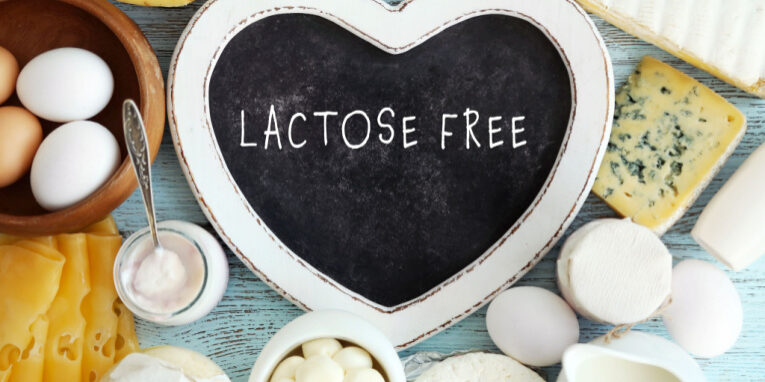Lactose-free Diet

Background:
Lactose is a sugar found in milk and milk products, as well as in a variety of other foods. The enzyme lactase, present in the lining of the small intestine, splits lactose into two sugars which can then be absorbed by the body and used as nourishment.
When lactase is absent or present in low levels, lactose passes through the intestine to the colon carrying extra fluid with it. In the colon, bacteria break down lactose into lactic acid and certain gases. Lactic acid is acts as a laxative and can cause uncomfortable symptoms for patients like abdominal cramps, and gas or flatus.
Lactase activity is reduced in people with certain intestinal conditions such as Crohn’s disease and celiac disease. Patients taking certain medications, and alcoholic patients, may also be lactose intolerant. Finally, patients who have part of the stomach or a large portion of the small intestine surgically removed may need to reduce the amount of lactose in their diet.
Purpose:
While lactose intolerance can be quite uncomfortable, it does not damage the intestine. The purpose of this diet is to eliminate lactose, or reduce it to tolerable levels, in order to relieve symptoms like bloating, cramping, and diarrhea.
- Low-lactose diet: Generally eliminates only milk and milk products. However, some can tolerate milk and yogurt in small amounts. These patients can experiment to find a tolerable level of lactose. In some cases, people can build up their tolerance by gradually introducing foods with lactose.
- Lactose-free diet: All lactose products must be eliminated from the diet. Food labels much be read carefully. Even foods like margarine, shortening, non-dairy creamer, and salad dressing can contain lactose.
What foods and food products ARE lactose-free?
- 100% lactose-free milk, soy milk
- Fresh, frozen, and canned vegetables (no creamed or breaded packaged veggies)
- Tomato paste and puree
- Tomato and spaghetti sauces without cheese
- Fresh, frozen, canned, and dried fruits
- Water-based breads (Italian, French, Jewish rye)
- Rice and popcorn cakes, graham crackers, Pareve-Jewish bakery products
- Cooked and dry cereals without added milk solids
- Pasta
- Rice
